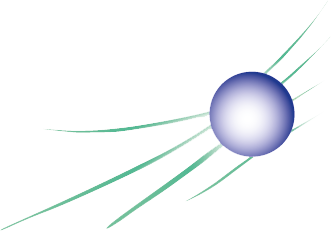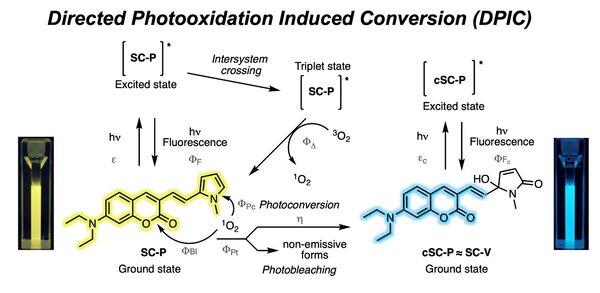Photo-convertible fluorescent probes are able to change their emission color upon light irradiation. This phenomenon is advantageously used in microscopy to unambiguously track cells, organelles or biomolecules over large spatio-temporal scales. In this field, fluorescent proteins dominate, to the detriment of small molecular probes, which are easier to use and less toxic.
In this study, we established a new mechanism for designing photo-convertible fluorescent probes. The principle is based on the conjugation of a fluorophore with an aromatic moiety that is reactive towards singlet oxygen (1O2). Under irradiation, the fluorophore, like any other fluorophore, generates 1O2 through de-excitation of its triplet state. This singlet oxygen preferentially oxidizes the reactive moiety, thus disrupting the conjugation of the fluorophore and leading to a change in emission color.
Based on this principle, SC-P probe undergoes a color change of 68 nm and enabled to photo-convert the lipid droplets of living cells using confocal microscopy. This mechanism, called DPIC for “Directed Photooxidation Induced Conversion”, is applicable to different fluorophores, thus extending the range of color and efficiency of these photo-convertible probes called BrightSwitch®.
Links :
https://onlinelibrary.wiley.com/doi/10.1002/anie.202215085
https://www.insb.cnrs.fr/fr/cnrsinfo/brightswitch-un-nouveau-mecanisme-de-photoconversion
Saladin, L.; Breton, V.; Dal Pra, O.; Klymchenko, A. S.; Danglot, L.; Didier, P.; Collot, M. Dual-Color Photoconvertible Fluorescent Probes Based on Directed Photooxidation Induced Conversion for Bioimaging. Angew. Chem. Int. Ed.n/a (n/a). https://doi.org/10.1002/anie.202215085


